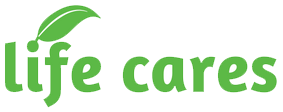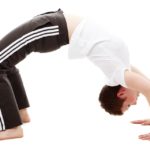Exercise is an essential element for a healthy and active lifestyle. It helps build strong muscles and bones and improves the functioning of the lungs and heart. With that said, exercise is not always fun and games. It can sometimes lead to sore muscles. That, in most cases, happens when one amps up the intensity of their exercise or try a new exercise. It could signal that your muscles are trying to respond to the exercise and, in turn, grow and get stronger. Soreness in the muscles can be annoying. Here are a few ways to offer quick relief to your sore muscles:
Light movement
When sore, you may want to sit on the couch until the pain dies. Guess what? That is the worst thing you can do. Incorporating some light activities when dealing with soreness helps increase circulation and improve blood flow all over the body. With increased blood flow, nutrients reach the muscles and quicken the repair process. Efficient repair of the muscles will reduce the soreness. Remember, you only need some light movement. You do not want to risk causing more damage to the muscle fibers. Opt for gentler activities like walking. You could also do some light strength training or bodyweight exercises.
Hydration
Dehydration contributes to more muscle soreness. See, water helps to flush out waste products. When muscles tear, they release toxins and waste products which need to get out of the body. The waste products contribute to increased soreness. Adequate hydration helps flush out the toxins and reduce muscle soreness.
Massage
A soothing massage is a miracle worker when dealing with soreness. Gently massaging tender points helps minimize the symptoms of DOMS. It would be perfect if you visited a masseuse every time you left the gym. However, that is unrealistic. Fortunately, there are self-massage options that you can use. A foam roller or a massage gun are great recovery tools to help with soreness. You could also consider acquiring a massage chair for sore muscles to give you a little tender loving care and ease the stiffness. Do not go overboard or be too rough with the massages. You do not want to end up with more muscle damage.
Stretching
Stretching helps ease tightness and increases your range of motion when sore. Even though it does little to heal muscle tears or aid in repair, the increased range of motion will help you feel better. While stretching helps with muscle soreness, you should not go ham. Overstretching the muscles could make them feel tighter. Do not stretch up to the point where it is unbearable.
Heat or cold therapy
The question of what is better between heat therapy and cold therapy is yet to receive answered. However, what matters most is what feels good for you. When feeling sore, you want something to offer relief, even temporary. Ice helps manage to swell, although some soreness could follow. Even so, reducing the swelling helps minimize the tension causing the pain. The heat helps manage pain signals. Heat therapy also helps with circulation. Decide what feels better for you between ice and heat.
Wrapping Up
Prevention is always better than cure. Finding ways to avoid muscle soreness as much as possible helps a lot. Always warm up your muscles before exercise. Use the proper technique to prevent muscle strain and injury when working out. Also, ensure that you get enough sleep to give your body a chance to repair the muscles.
![]()









